Monthly economic brief: August 2021
The monthly economic brief provides a summary of latest key economic statistics, forecasts and analysis on the Scottish economy.
This document is part of a collection
Business Activity
Business activity has strengthened as the majority of lockdown restrictions are removed.
Proportion of business trading
- At the start of August, an estimated 98% of businesses in Scotland were trading, having risen from 82% in January during lockdown[2].
- The phased easing of restrictions since April has enabled a sharp increase in the share of businesses trading, this was most impactful in consumer facing services which had been largely required to close.
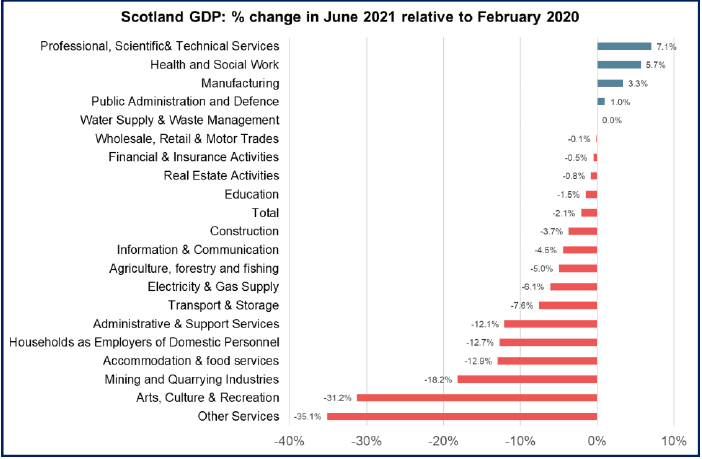
- The largest increases since April have been in the accommodation and food services sector (up 58 percentage points to 94%) and the arts, culture and recreation sector (up 43 percentage points to 94%). Non-consumer facing services sectors (e.g. information and communication) and manufacturing and construction have been less impacted by restrictions with over 98% of business trading over this period, reflecting the ability to continue operations through home working and/or adapting operations to the restrictions in place.
- The rate of increase in those trading in consumer facing sectors has naturally slowed since the start of June, as the share of businesses trading approaches full capacity. As a result the overall share of businesses trading has remained broadly stable since June.
Business output
- The net balance of respondents in the Purchasing Managers Index (PMI)[3] business survey reported a rise in business activity in July, though at a slower pace than in June.
- Output grew in both the services and manufacturing sectors however the easing in momentum was concentrated to the manufacturing sector, with services output expansion continuing to benefit from the easing of restrictions.
- Demand continued to strengthen in July with new work rising at a near record pace, albeit a slowing on previous months. New Business for services remained strong with only a slight easing on momentum however new orders for manufacturing fell to a four month low.
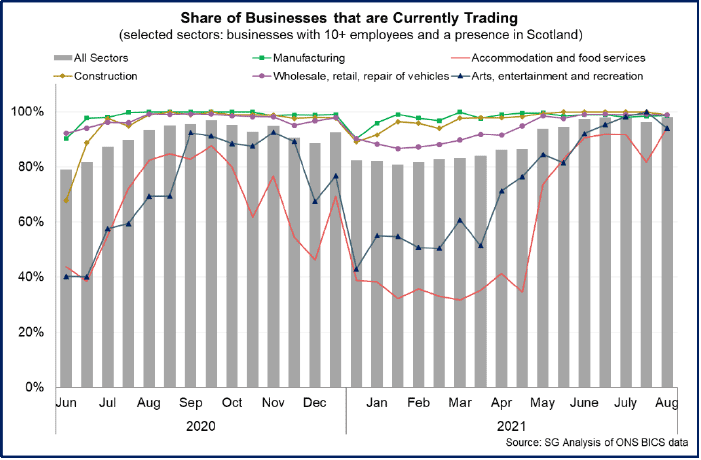
- While growth in activity and demand continues to strengthen across the economy as a whole, at this stage of the recovery, the capacity at which business are operating and the turnover generated compared to what would be normally expected, continues to differ notably across sectors.
- At the start of August, 30% of businesses reported having lower turnover than normal for the time of year, while 44% reported that turnover was not affected and 12% reported that it had increased.[4] However, the arts, entertainment and recreation services sector has the highest proportion of firms (58%) reporting that business turnover is lower, followed by the accommodation and food services sector (54%).
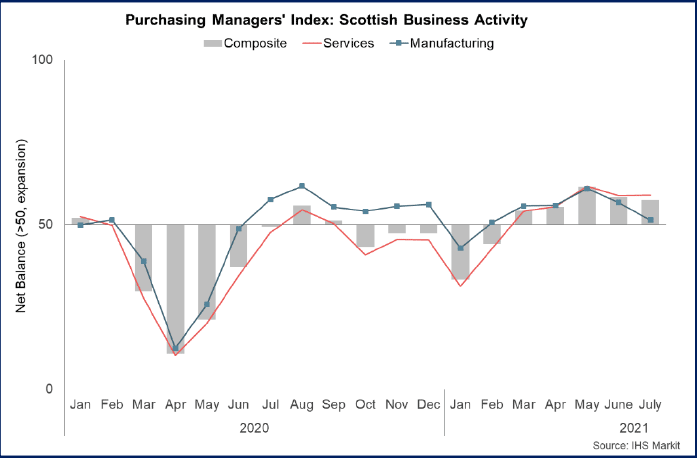
- In line with the easing of restrictions there has been a downward trend in the estimated share of businesses with decreased turnover. For example, the proportion of business overall reporting lower turnover has fallen from around 45% to 30%, while the proportion reporting a rise in turnover has increased from around 6% to 12%. The rates remained relatively stable at the start of June and into July however along with the further easing of restrictions have started to pick up again. Overall trading conditions remain challenging alongside the specific challenges that different sectors are facing at their stage of recovery.
- Looking to the year ahead, the PMI business survey for July showed that levels of business optimism had eased back from recent months, however remained elevated overall, with strong expectations from businesses of further strengthening in business activity to come over the year.
- The flash UK PMI for August signalled further growth in UK business activity going into the third quarter, however also flagged a further slowing in momentum across the private sector during the month. Survey respondents widely noted constraints on business activity due to staff shortages and supply chain issues.[5]
Trade
- International trade and supply chains have experienced significant challenges in 2021 arising from the impacts of the pandemic and the transition to the new trade agreement between the UK and EU which includes the introduction of new regulatory and administrative compliance checks on goods trade.
- In the first quarter of 2021, the value of Scotland’s goods exports were £6.2 billion, down 15.2% compared to Q1 2020, while imports were £5.3 billion, down 3% over the same period.[6]
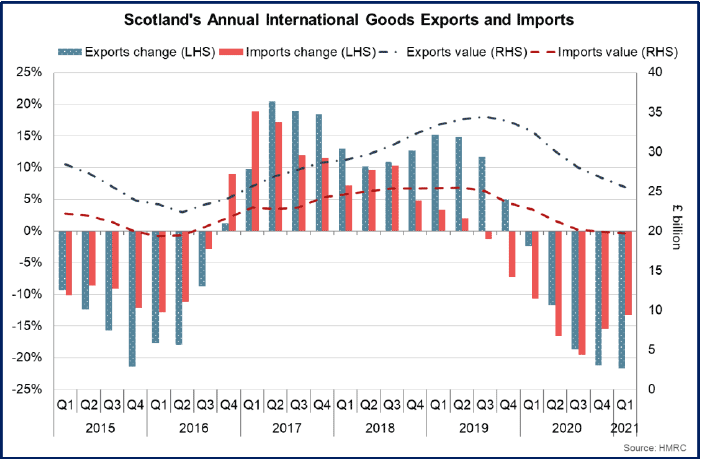
- The fall in exports was mainly driven by a 36% fall in exports of oil and gas, with notable falls across other commodities including food (-20%) and beverages (-2.9%). However, there was a 19% increase in exports of chemicals.
- More recent monthly UK data for June[7] signals that trade has strengthened from the falls at the start of the year, with total goods exports rising 3% over the month. However goods exports in 2021 so far (Jan – Jun) remain 11% below the equivalent period in 2018. In June, exports of Scotch Whisky were down 3% over the month (the first six months of 2021 exported the same volume as the same period in 2018), while exports of fish rose 3% (the first six months of 2021 were 14% down on same period in 2018).
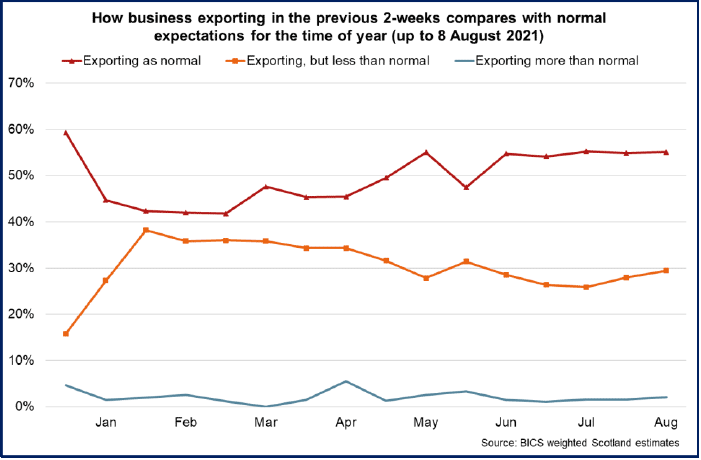
- More recent business survey data into the start of August also indicates some improvement in trade from the start of the year with 55% of Scottish businesses reporting to be exporting as normal for the time of year (up from 42% at the start of February) while 30% were exporting less than normal (down from 38% at the start of February). However, the rates have remained broadly stable since June suggesting that trade conditions remain challenging. In addition, the share of Scottish businesses experiencing challenges with importing has been increasing relative to exporting in recent months.[8]
Contact
Email: OCEABusiness@gov.scot
There is a problem
Thanks for your feedback